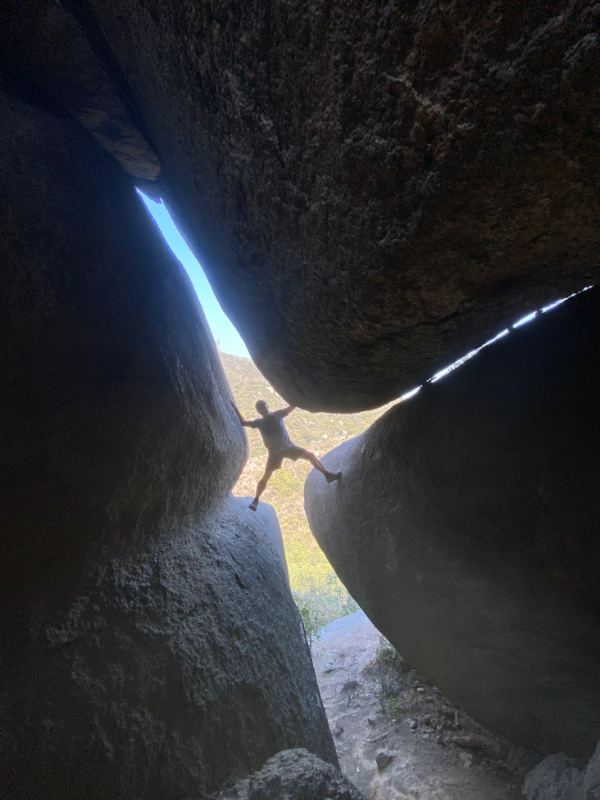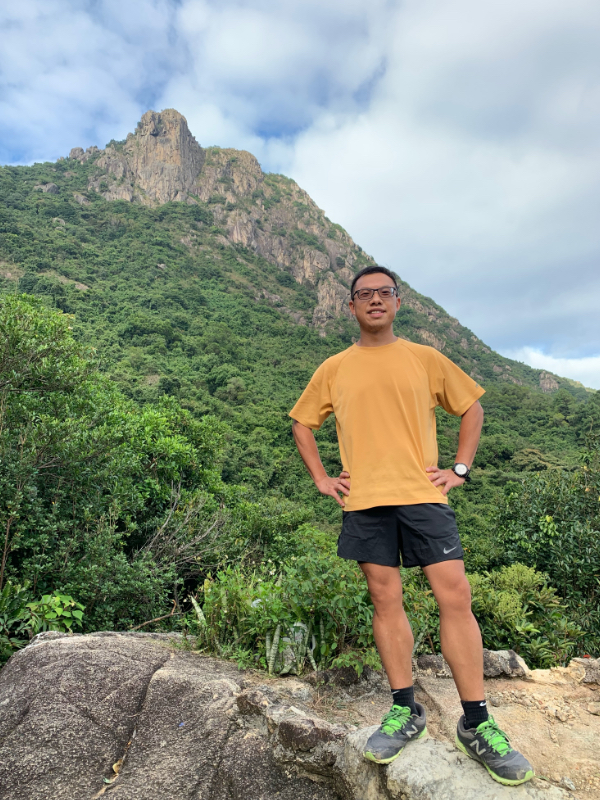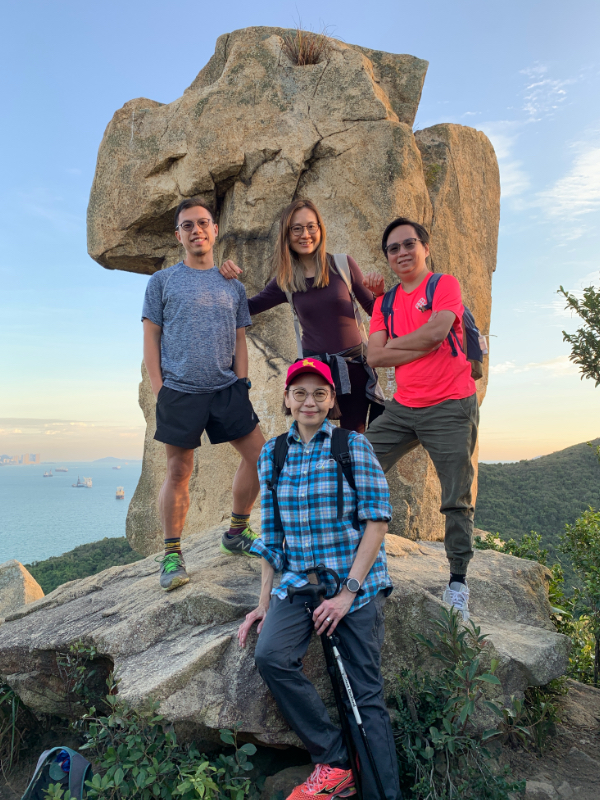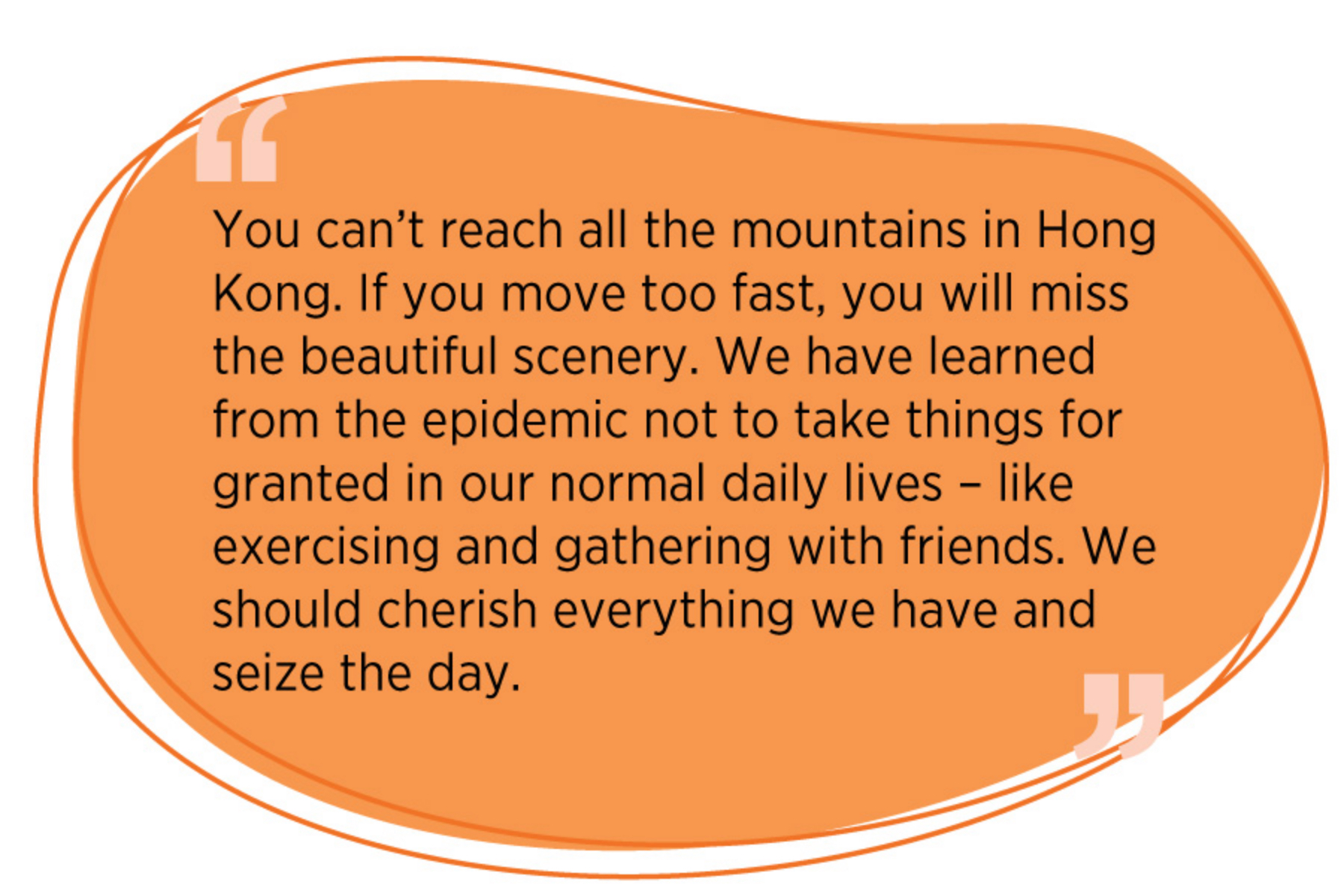Explore the city’s ‘hidden’ hiking trails

Many people were forced to give up overseas travel after the epidemic struck. By taking up hiking these two years, Occupational Therapist I Ronny Lam, who works in the Occupational Therapy Department of Kowloon Hospital, has discovered the healing power of nature. He relieved the stress of work and learned to slow down by going on long treks through gorgeous and largely unexplored corners of Hong Kong that he never thought to visit before COVID-19.
“If you didn’t go hiking, you wouldn’t know there are so many interesting places in Hong Kong,’’ says Ronny (photo below). Many hiking trails have been packed since the epidemic began, “so I will visit less popular and harder-to access routes with my hiker friends, for instance heading for Lin Fa Shan rather than Sunset Peak (Tai Tung Shan), which draws big crowds because of its miscanthus grasses.”
“If you didn’t go hiking, you wouldn’t know there are so many interesting places in Hong Kong,’’ says Ronny (photo below). Many hiking trails have been packed since the epidemic began, “so I will visit less popular and harder-to access routes with my hiker friends, for instance heading for Lin Fa Shan rather than Sunset Peak (Tai Tung Shan), which draws big crowds because of its miscanthus grasses.”

Encourage patients to slow down
Ronny’s weekly hikes are a welcome relief from the stress of his work providing outreach services to discharged elderly patients, many of whom are reluctant to be admitted to hospital during the epidemic. With a spate of community infections during the epidemic’s peak, Ronny would be careful to observe strict virus control measures during his home visits, such as wearing shoe covers and disinfecting his hands.
“I was a bit stressed at that time,” he recalls. “With frontline work, you are always in a hurry, and this unconsciously influences me when I am hiking, especially when I go up and down stairs or inclined paths. I sometimes walk too fast and get cramp. But the natural scenery always calms me down.” It is a lesson he has incorporated into his occupational therapy work where he tells patients about the ‘five ways to wellbeing’, one of which is to ‘take notice’ and be aware of what is happening in the present. He now encourages patients to slow down by sharing them with his hiking experiences. “Many pulmonary patients are accustomed to being in a rush, and they will feel short of breath easily when going to the toilet, or going in and out of a room,” he says. “I remind them to slow down their pace.”
“I was a bit stressed at that time,” he recalls. “With frontline work, you are always in a hurry, and this unconsciously influences me when I am hiking, especially when I go up and down stairs or inclined paths. I sometimes walk too fast and get cramp. But the natural scenery always calms me down.” It is a lesson he has incorporated into his occupational therapy work where he tells patients about the ‘five ways to wellbeing’, one of which is to ‘take notice’ and be aware of what is happening in the present. He now encourages patients to slow down by sharing them with his hiking experiences. “Many pulmonary patients are accustomed to being in a rush, and they will feel short of breath easily when going to the toilet, or going in and out of a room,” he says. “I remind them to slow down their pace.”

